6 Benefits of Sand Sensory Play for Children with Autism
Benefits, tips, and sandbox sensory play ideas

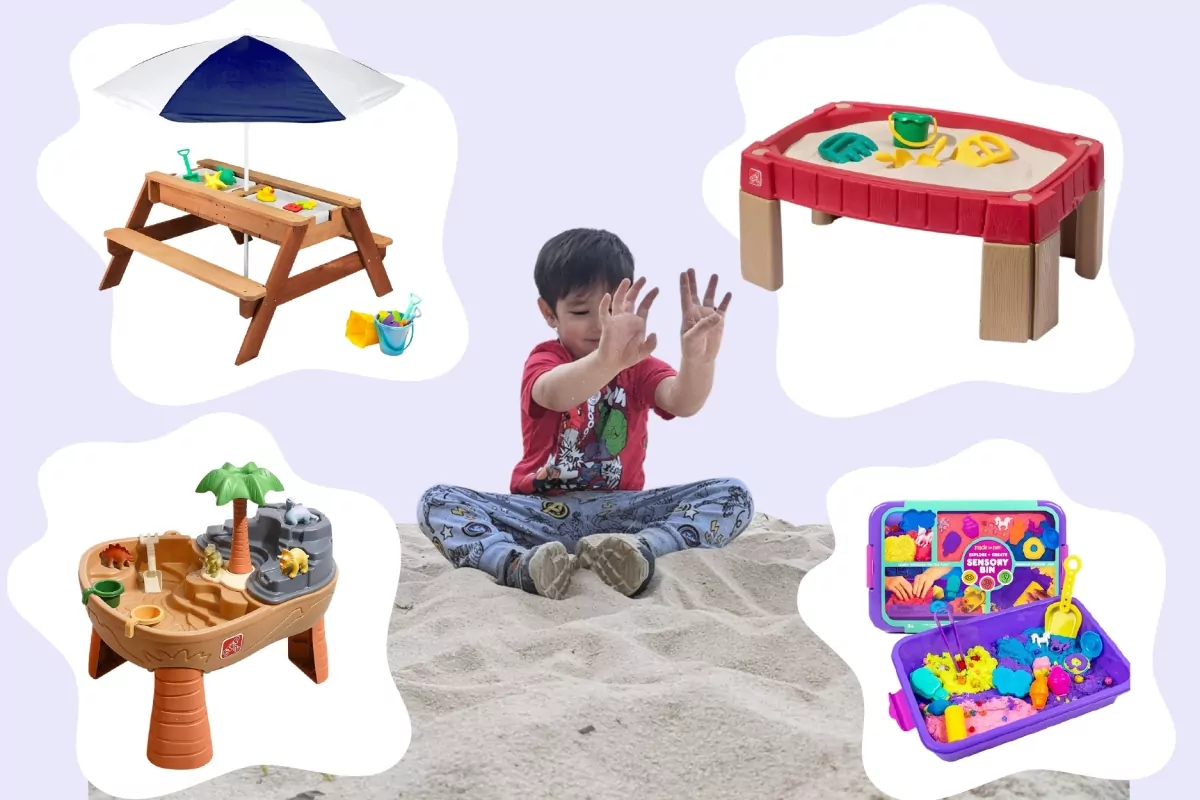
Many children on the autism spectrum struggle with sensory processing disorder (SPD). This condition makes it hard to perceive or respond to stimuli received through their senses. SPD can cause children to have difficulty interpreting their environment and may react to situations “inappropriately.”
Sensory sand play is beneficial to children with SPD because it integrates all major senses into playtime comfortably.
A sensory sandbox is a box, bin, or play table filled with sand or a sand alternative with the addition of various toys or sensory-engaging objects.
Benefits of sand sensory play
When a child places their hands into a sandbox, they enter a safe world of restriction-free imaginative play. Unlike a puzzle or coloring book, sand play allows your child to experiment and explore their natural “out of the box” curiosity while safely inside the box.
If you add toys, essential oils, water, or colorful objects, many senses are engaged at once, and your child can work on their sensory development without feeling like they are completing a task.
1. Visual
You can make sandboxes incorporate visual stimuli by adding alphabet and numeral pieces, glowsticks, and colorful blocks to the sand.
2. Auditory
The sound of sand being sifted and squished is mesmerizing in itself; however, you can also add auditory toys.
Examples include the caterpillar fidget toy, a motorized dump truck, or sensory pop tubes. Auditory stimulation is much less alarming to a child with SPD when presented with other forms of stimuli.
3. Olfactory
The olfactory sense is responsible for processing smells. You can incorporate scent into the box by adding essential oils to the sand.
Kids that are often underwhelmed by stimuli may benefit from a bold citrus oil, while a child that is easily overwhelmed might benefit from soothing lavender oil.
4. Tactile
The tactile sense is responsible for processing information through touch. As your child buries their hands in the sand uncovering objects, they become more in tune with how objects feel.
Sandbox sensory play is great for creating a mental connection between the way an object will feel based on how it looks and vice versa. You can optimize tactile play by adding water or textured toys to the sand.
5. Vestibular
The vestibular sense is known as the movement, gravity, or balance sense because it is responsible for our ability to perceive where we are in space. Children with vestibular issues may bump into things often or have poor hand-eye coordination.
Through hands-on activities like sand play, your child will begin to grasp a deeper understanding of how gravity works and the body or objects move.
6. Proprioceptive
The proprioceptive system is responsible for body awareness. This means the movement, position, and orientation of our muscles and joints and how they work together.
A child struggling with this sense may not be aware of how tense or relaxed their muscles should be for certain activities, so tasks like zipping a jacket or being gentle while petting an animal may be difficult. Sand play provides muscle and joint movement practice, making them more instinctually aware of how to use their muscles effectively.
Sandbox recommendations
Here are five sensory sandboxes that stand out as the most durable, easy to clean, convenient, and stimulating.
Step2 Naturally Play Sand Table
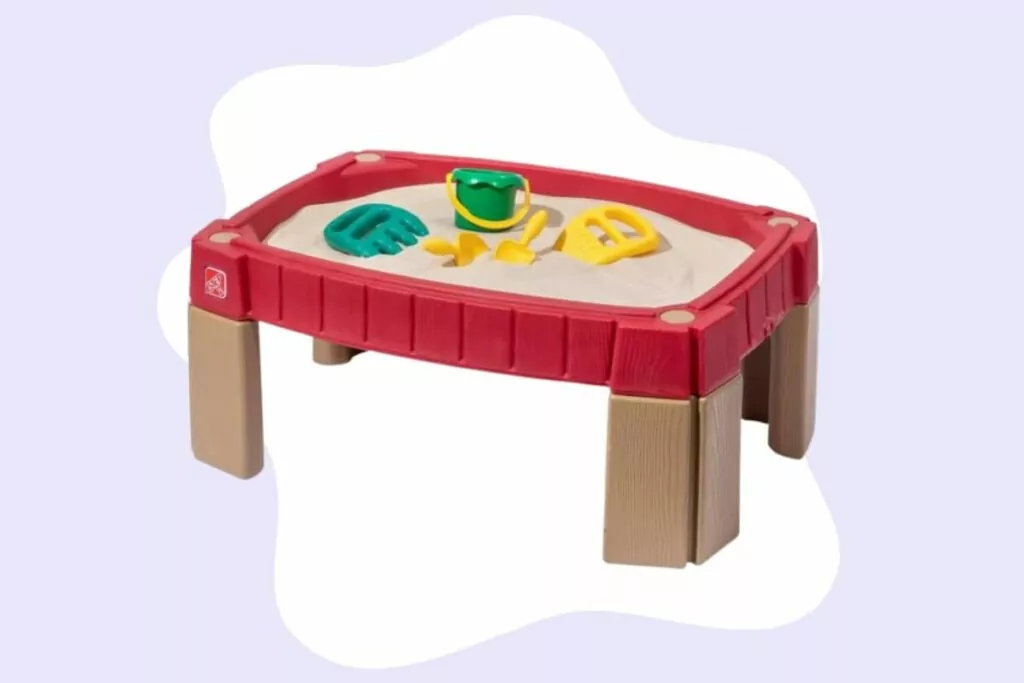
Product highlights:
Best Choice Products Kids 3-in-1 Sand & Water Activity Table
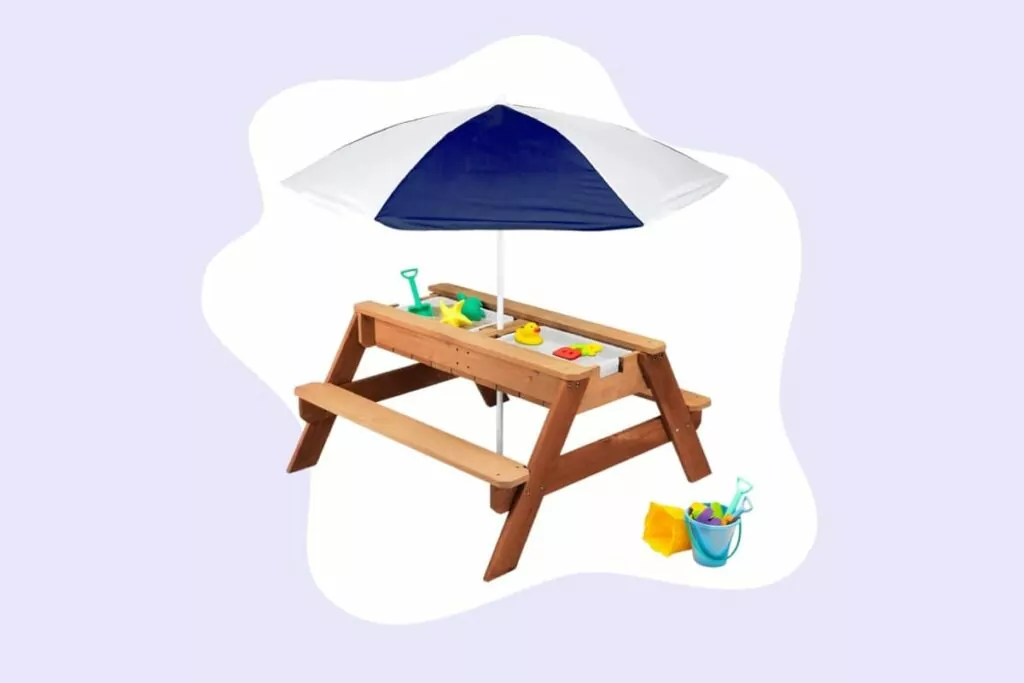
Product highlights:
Step2 Dino Dig Sand & Water Table: Toys & Games
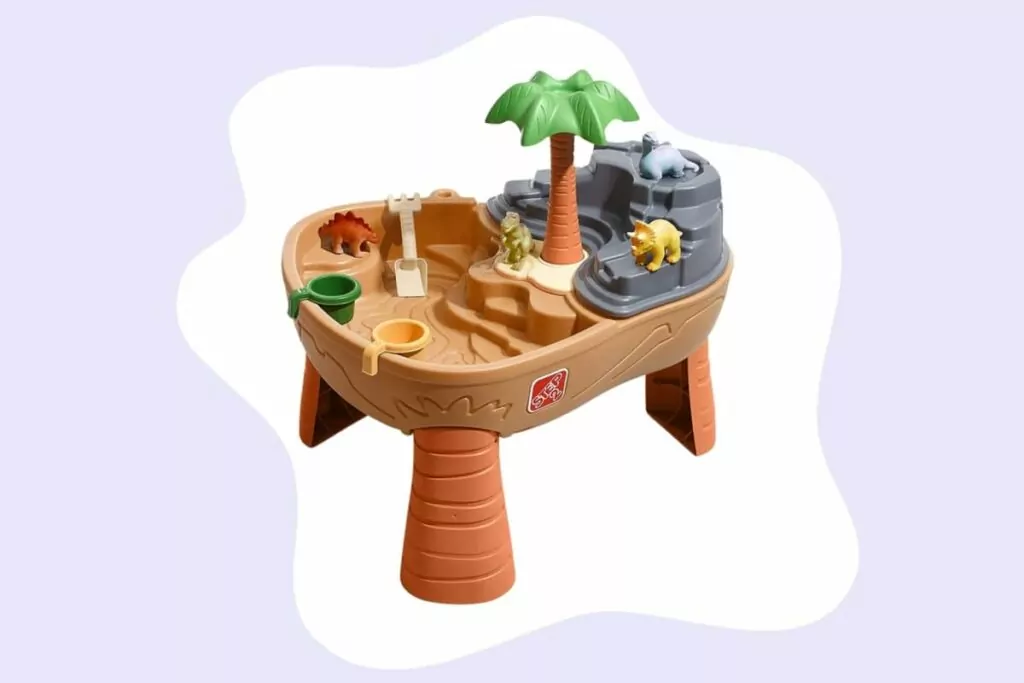
Product highlights:
INvench Construction Dinosaur Play Sand Set
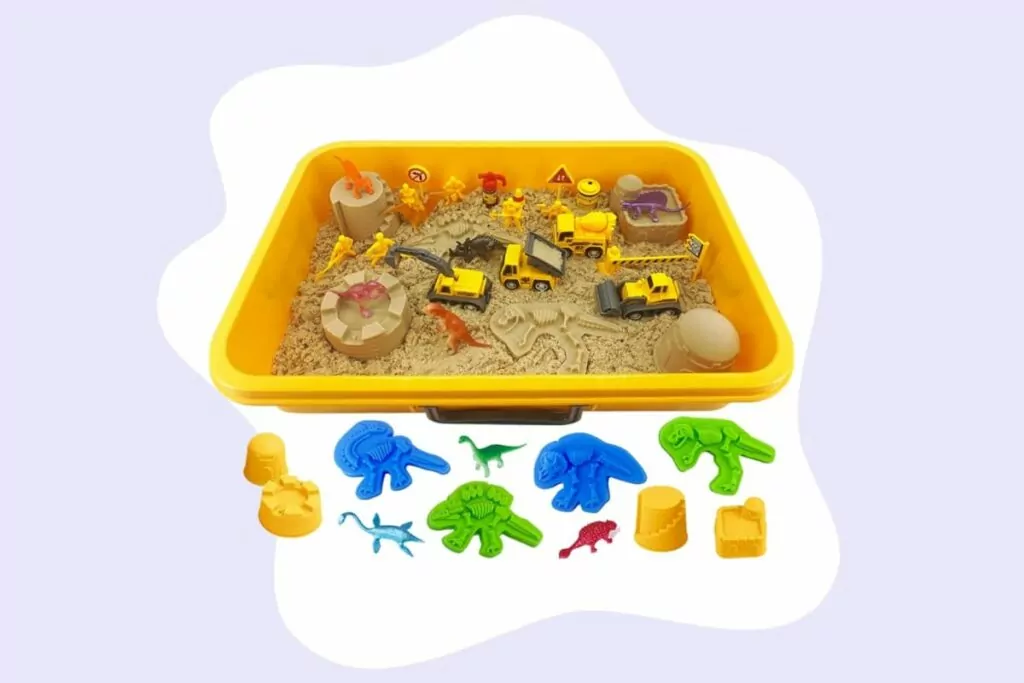
Product highlights:
Made By Me Explore + Create Unicorn Sensory Bin
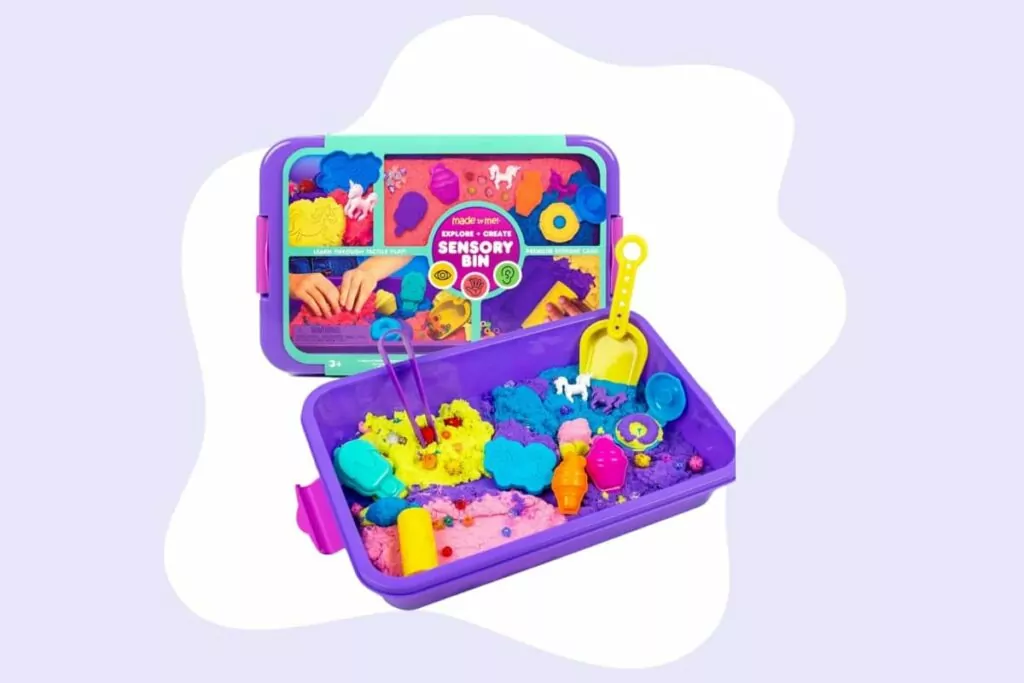
Product highlights:
Frequently asked questions
What type of sand should be used for a sensory sandbox?
Use non-toxic play sand, not garden sand. Premium-grade rainbow sand and Kinetic sand are both soft, colorful options that are easy to clean and kid-approved.
For most children, the feeling of mushing sand is quite satisfying. However, sand might not be the right fit for everyone. Some ideas for sand alternatives include kinetic sand, cloud dough, colorful rice, and water.
What toys should I add to a sensory sandbox?
You can add any toy that safely engages your child’s senses. Popular additions include toy trucks, balls, fidget toys, playdough tools, animal figures, and the typical pail and bucket.
Your child gets the most sensory benefits when the toys are colorful, easy to hold, and interactive.
How do I keep a sensory sandbox safe?
While your child plays in the sandbox, they may be tempted to explore their senses in unsafe ways, like placing items in their mouth. If your child is extra inquisitive, you can ensure your child’s safety by using non-toxic sand and avoiding the addition of small toys that may be a choking hazard.
Always watch your child while they play and check the sand frequently to ensure no contaminants or small pieces have entered the box.
Conclusion
Sand play offers many valuable sensory benefits to children with autism and sensory processing disorder.
Sandboxes come in many shapes and sizes, so finding an outdoor, indoor, or travel box is easy. You can also make your own sensory bin with a lidded plastic container, play sand, and a few toys. Choose a non-toxic sand or sand alternative, like kinetic sand or sand dough, when filling the sandbox.
You can add colorful noise-making toys and essential oils to maximize engagement and provide hours of fun sensory development.
Written by Stephanie Chapple

Stephanie is a mother, writer, and artist with an affinity for rock and mineral collecting. Through the personal challenges of living with ADHD, the inspirational pleasures of working with cognitively disabled children, and having loved ones on the spectrum, she developed a thirst for knowledge regarding neurological development and behavioral health.